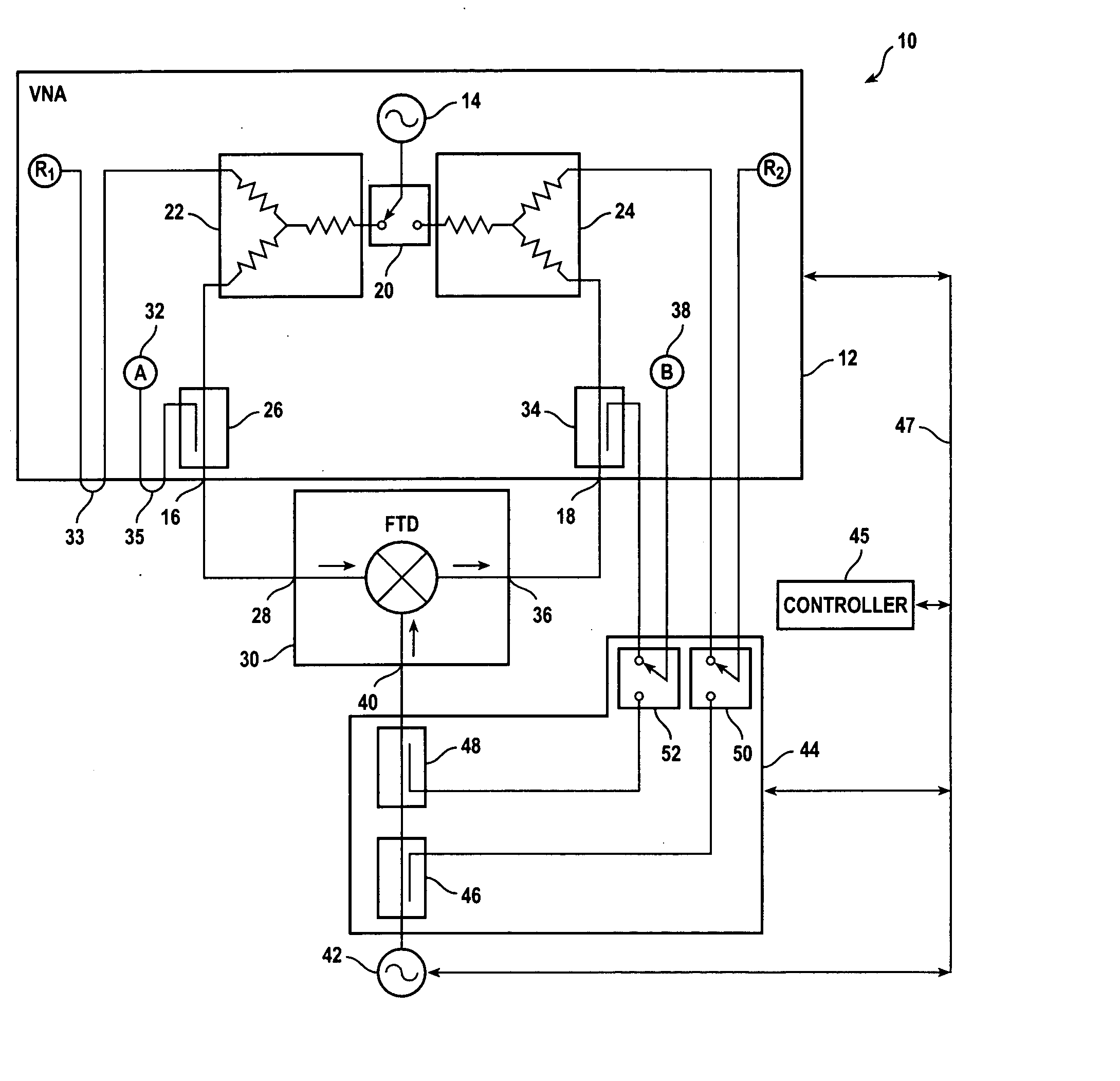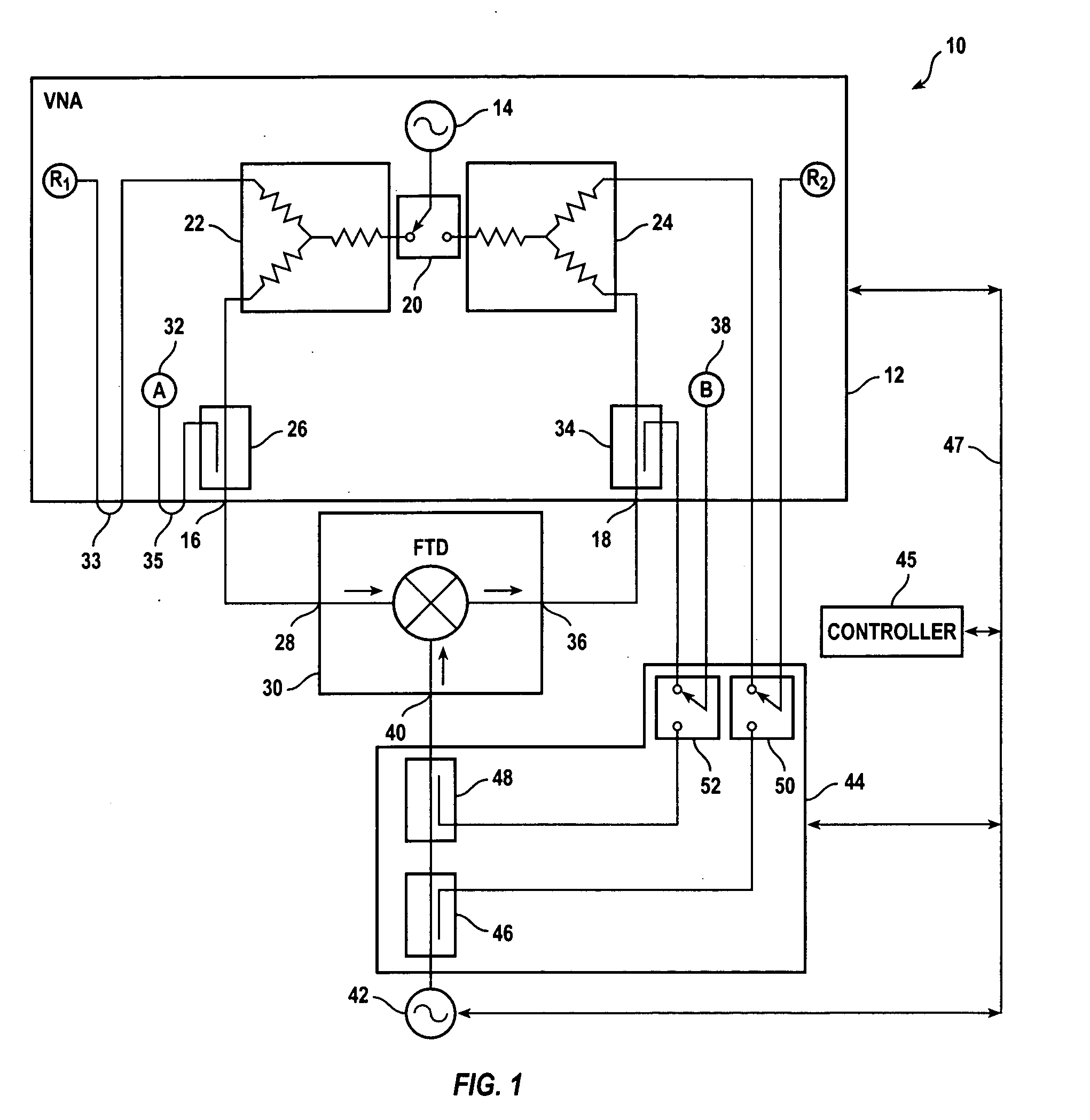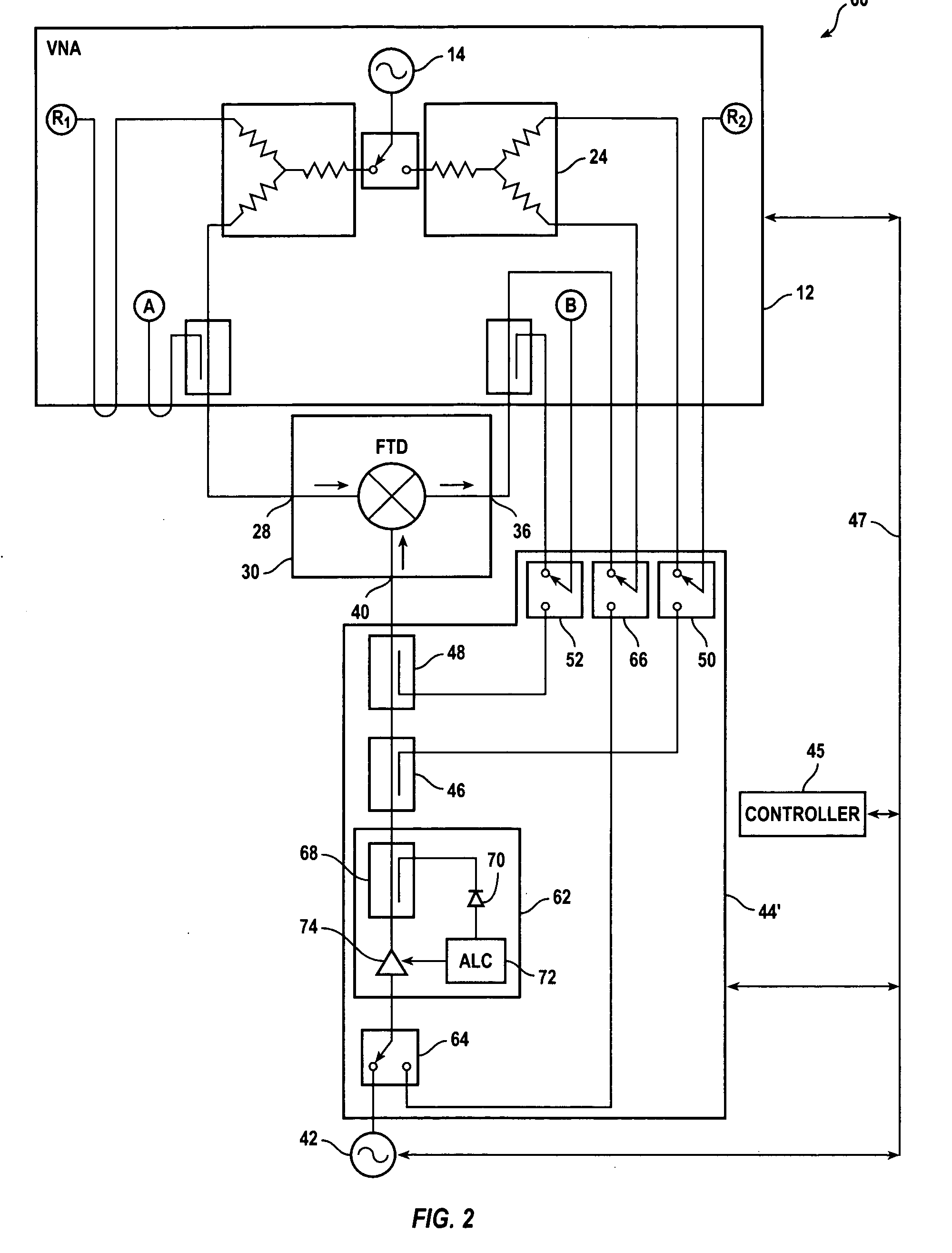Method for measuring a three-port device using a two-port vector network analyzer
a vector network analyzer and three-port technology, applied in the direction of measurement devices, resistance/reactance/impedence, instruments, etc., can solve the problems of filtering, complicating or limit the capabilities of the test system, and conventional vector network analyzers do not provide or account for the effects of the second sour
- Summary
- Abstract
- Description
- Claims
- Application Information
AI Technical Summary
Problems solved by technology
Method used
Image
Examples
Embodiment Construction
I. Exemplary Test Systems
[0012]FIG. 1 is a diagram of an exemplary stimulus / response test system 10 for characterizing an FTD 30 constructed according to a first embodiment of the present invention. A VNA 12 has at least one internal signal source 14 that is selectively connected to test port A 16 or test port B 18 through an internal switch 20 and power splitters 22, 24. This internal signal source 14 is often referred to as a “stimulus source.” A suitable VNA is a MODEL E8362B, which is a two-port VNA, available from AGILENT TECHNOLOGIES, INC., of Palo Alto, Calif. Other types of stimulus / response instruments having vector (i.e. magnitude and phase) measurement capability are alternatively used to provide the source, detectors, and splitters. Examples of instruments used in alternative embodiments include three-port VNAs and two-port VNAs with a second internal source, such as an LO drive source.
[0013] The power splitters 22, 24 provide a first portion of a first signal from the ...
PUM
 Login to View More
Login to View More Abstract
Description
Claims
Application Information
 Login to View More
Login to View More - R&D
- Intellectual Property
- Life Sciences
- Materials
- Tech Scout
- Unparalleled Data Quality
- Higher Quality Content
- 60% Fewer Hallucinations
Browse by: Latest US Patents, China's latest patents, Technical Efficacy Thesaurus, Application Domain, Technology Topic, Popular Technical Reports.
© 2025 PatSnap. All rights reserved.Legal|Privacy policy|Modern Slavery Act Transparency Statement|Sitemap|About US| Contact US: help@patsnap.com



